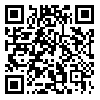Volume 2, Issue 3 (2016)
QHTS 2016, 2(3): 1-25 |
Back to browse issues page
Download citation:
BibTeX | RIS | EndNote | Medlars | ProCite | Reference Manager | RefWorks
Send citation to:



BibTeX | RIS | EndNote | Medlars | ProCite | Reference Manager | RefWorks
Send citation to:
Bazoubandi H. The interpersonal meta-functional analysis of Holy Quran and its role in Quran’s translation. QHTS 2016; 2 (3) :1-25
URL: http://qhts.modares.ac.ir/article-10-943-en.html
URL: http://qhts.modares.ac.ir/article-10-943-en.html
Abstract: (9114 Views)
In translation studies, meaning is at the center of translation practice. Since Systemic Functional Linguistics considers language as a meaning making resource, it is arguedthat such an approach could serve as a helpful tool for translator. In Systemic Functional Linguistics (SFL), any text encodes three kinds of meanings or meta-functions. Traditionally, translators and evaluators of translations have mostly focused on one aspect of meaning, i.e., the ideational, in particular experiential. Using a descriptive-analytic method within the SFL, this study is aimed to investigate the way in which the interpersonal meaning of the dialogues between God and the Devil is exchanged in four Suras of Araf, Hijr, Isra and Saad and its role in Quran’s translation. The results show that, taking into consideration the constitutive components of clause as exchange and awareness of interpersonal meta-functional analysis, the translator of Quran will have an appropriate and concrete model in hand for investigating the way of exchanging meaning and will be able to evaluate the quality of his translation. However, regarding the specific characteristics of Quran language, the network unity of verses, the existence of Wujuh and multiple semantic layers of Qur'an and hence the infinitude of Quran, generally this approach would not be adequately helpful in the field of commentary of Quran.
Keywords: : The text of holy Quran, the language of the Qur'an, interpersonal meta-function, Translation, modality
Received: 2015/11/4 | Accepted: 2016/01/23 | Published: 2016/02/9
| Rights and permissions | |
 |
This work is licensed under a Creative Commons Attribution-NonCommercial 4.0 International License. |








